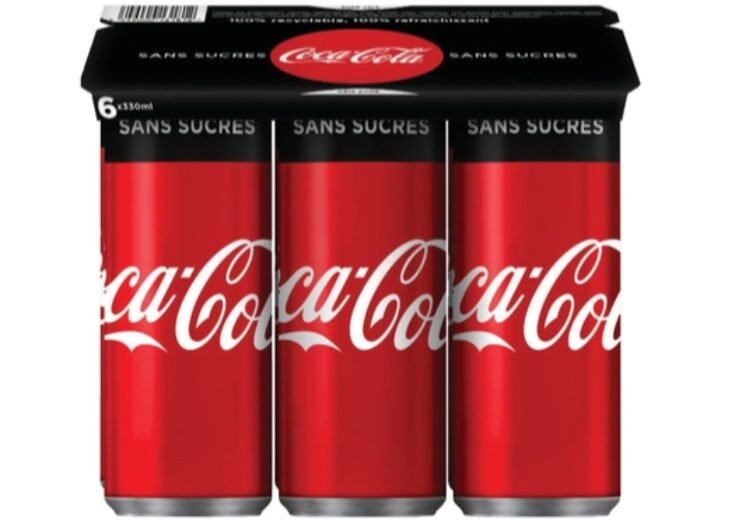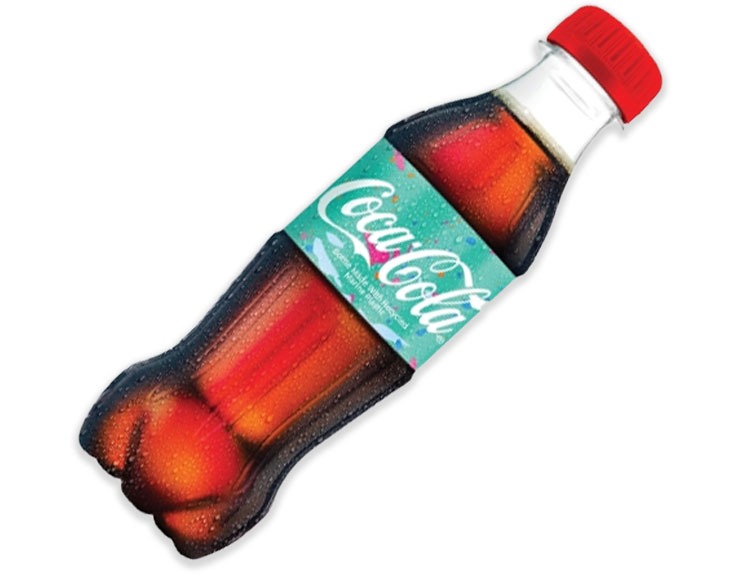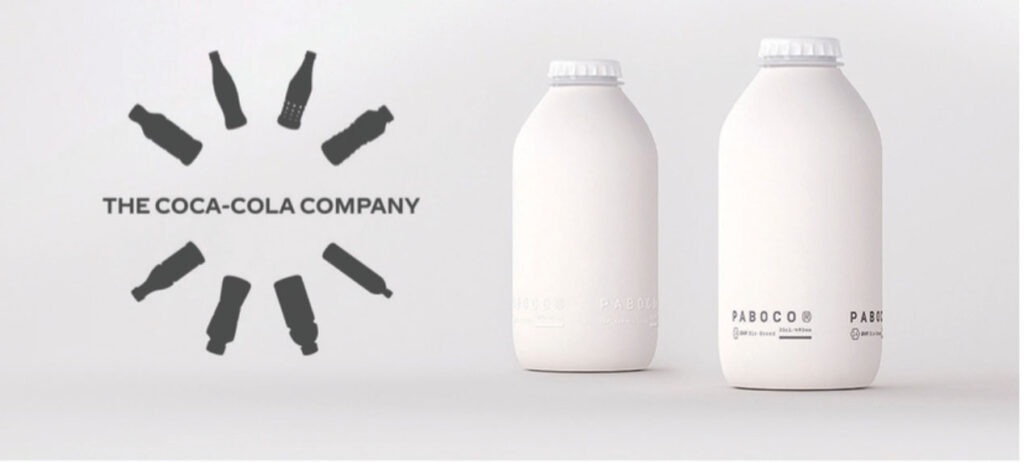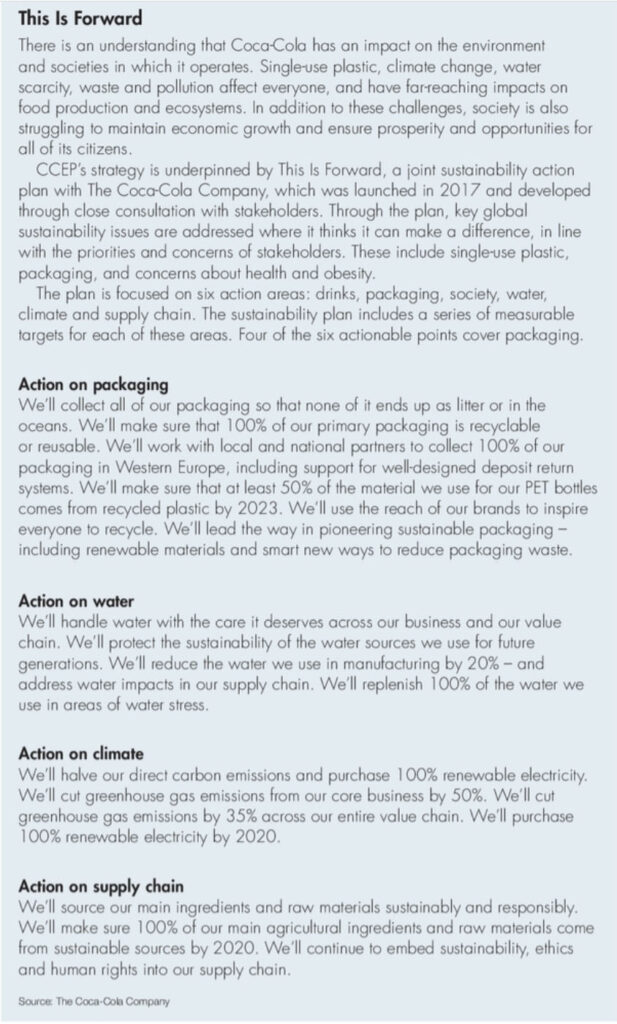CCEP and the Coca-Cola are working towards the joint World Without Waste goal of a circular economy where 100% of packaging is collected, reused or recycled, so that none of it ends up polluting the environment

There is a keen openness to innovation, including how to optimise multi-pack can packaging (Credit Coca-Cola Company)
As vice-president of sustainability at Coca-Cola European Partners (CCEP), Joe Franses is tasked with driving forward progress with the packaging commitments outlined in CCEP’s joint sustainability action plan with The Coca-Cola Company, called This is Forward. He explains how The Coca-Cola System is investing in innovative beverage packaging solutions to meet its stated ultimate goal, entitled ‘World Without Waste’.
Innovation has been at the heart of Coca-Cola European Partners (CCEP)’s approach to packaging since it launched an Action on Packaging strategy in 2017, and is vital to tackling some of the most challenging issues when it comes to packaging waste. Core to the strategy – and to its joint sustainability action plan with The Coca-Cola Company – is a programme called ‘World Without Waste’, which includes goals to work towards a circular economy where 100% of packaging is collected, reused or recycled, so that none of it ends up polluting the environment.
So whether it’s removing plastic from secondary packaging, investing in new sources of recycled plastic or exploring new delivery models, achieving a circular economy will only be possible by investing in research, development and innovation at every stage of the packaging life cycle.
Innovation is central to the four pillars that make up the sustainable packaging strategy: removing unnecessary plastic, collecting 100% of our packaging, reaching 100% recycled PET in our plastic bottles, and exploring refillable and packaging-free delivery models. This work is being driven by an innovation hub at the heart of CCEP and Coca-Cola’s sustainable packaging office. It is only by driving innovation across each of these pillars that will enable people to enjoy Coca-Cola drinks in a sustainable way. The pillars, and the impact they will have in helping them get closer to a circular economy and their ‘World Without Waste’ vision, are as follows.
CCEP World Without Waste removing unnecessary plastic
The first step on the circular economy journey is to ensure that all of the packaging used is 100% recyclable, and to reduce the amount of packaging that is being used in the first place. The corporation has a strong track record of innovation in light weighting packaging – helping the brand to use less plastic and develop packaging with a lower carbon footprint. In 2008, 500ml plastic bottles weighed 28.9g; today they weigh just 19.9g.
Last year, additional commitments were made to remove hard-to-recycle and unnecessary plastic packaging from CCEP’s portfolio. We know from our research that many consumers find shrink-wrap hard to recycle. So, we’ve been working in close collaboration with packaging suppliers to identify new ways to package multi-pack cans. Last summer, it was announced that shrink-wrap will be replaced with sustainably sourced cardboard – removing a total of 4,000t of single-use plastic per year from the supply chain. Also announced was a plan to roll out the use of the innovative paperboard KeelClip, as one of the board packaging solutions for 250ml four-pack cans in the Netherlands.

While there is a tangible desire to use less plastic packaging where possible, the aim is to transition away from using virgin plastic altogether. In October, CCEP accelerated its goal to increase the amount of rPET in plastic bottles from 25% to 50%. We now expect that, by 2023, over half of the PET used will be from rPET. And the process won’t stop there.
Zero ambition of CCEP World Without Waste
In the longer term, the partnership is working to eliminate the need for virgin plastic altogether, aiming to get to a place where all of the plastic used is recycled.
It is already using 100% rPET across the Smartwater, Honest Tea and Chaudfontaine brands, and just last month, Sweden became the first market globally that moved all locally produced plastic bottles to 100% rPET.
These moves will avoid the use of 12,500t of virgin plastic every year. However, currently, there isn’t a large enough supply of rPET to meet the needs, or a long-term goal, of using 100% rPET across the entire Coca-Cola portfolio. This is where innovation really matters, so there is investment in new technologies and processes like enhanced recycling, which will allow us to upcycle plastics that would previously have been seen as waste or unrecyclable.

An example of the potential of enhanced recycling can be seen in the partnership with Ioniqa Technologies and Indorama Ventures, which saw the creation of the world’s first sample plastic bottle made with 25% marine plastics (collected from coastal areas and ocean clean-up programmes, as part of the Spanish litter collection programme, Mares Circulares), in October last year.
While this technology is in its infancy, the bottle is a proof of concept for what enhanced recycling technology may achieve over time. It allows for hard-to-recycle plastics to be broken down to monomers – the building blocks of plastic – stripped of impurities, and rebuilt to virgin-grade quality that meets the standards required to become food-grade plastics. The partnership is investing to help scale this innovation so that low-grade plastics, including plastics that are currently sent to incineration and landfill, can be made back into bottles in the future.
The last part of the circular economy is making sure there are suitable collection systems in place to help consumers return their packaging, thus helping close the loop.
That’s why they have made it part of the partnership’s mission to achieve 100% collection – which, in practice, means collecting and recycling the equivalent of a bottle or can for every one produced by 2030.
A lot of work is being undertaken to make it easy for consumers to recycle their waste, and to develop innovative solutions to change behaviour on litter and recycling. We are working with a number of customers to test ‘reverse vending machines’, which rewards consumers for returning their packaging with money-off vouchers. And we are testing uniquely coded packs that automatically refund customers their deposit when they place a bottle in a recycling bin.

Packaging is also being used in innovative ways to encourage consumers to recycle. For example, in Sweden, for the new locally produced 100% rPET portfolio, Coca-Cola has unveiled new labels on which brands step aside to push the recycling call-to-action centre stage. This innovative use of labels is important. Even though recycling rates for PET bottles are relatively high in Sweden (approximately 85%), there is still more that can be done to remind consumers about the importance of recycling, and communicate that our bottles are made from 100%-recycled plastic.
To transition to a circular economy, where packaging is collected and recycled, it is essential that the packaging comes back so that the material can be reprocessed, and thus increase the supply of recycled plastic that can be used again in new bottles.
Ultimately, the idea is to see all of packaging returned and recycled – ideally into new beverage packaging. Not littering the oceans. Coca-Cola can’t achieve this alone, so it is working with governments, NGOs and industry partners to introduce deposit return schemes, especially in markets where successful and proven alternatives don’t already exist.
In some markets refillable bottles already play a significant role in the packaging mix. Across the portfolio, 17% of the packaging that Coca-Cola produces in Western Europe can be returned, washed and refilled before going back out into the market. Since forming CCEP in 2016, the company has invested in five new refillable glass lines – including a €30 million investment in a new refillable glass line in Mannheim, Germany, which can fill 60,000 glass bottles every hour.
The European model and
In some markets, the infrastructure for refillable bottles is not in place, so we are currently looking at other ways to use refillable packaging, and new ways to deliver and collect packaging from customers. In France, for example, there is a partnering with Loop TerraCycle to help create a new circular e-commerce platform. This enables people to enjoy the iconic glass bottles, along with other high-quality brands, delivered direct to their homes in durable, reusable packaging. Then, when they have finished with them, the bottles are collected, cleaned, refilled and reused.
Much of the innovation that has been invested in is already in the market – like the technology behind Coca-Cola’s PlantBottle, in use since 2009, which contains up to 30% of plastic made from plants. It has also opened up the intellectual property on this technology, so that others can utilise the innovation too. And some other upcoming exciting innovations remain in development, like the world’s first 100% bio-based and recyclable paper bottle – a concept for which Coca-Cola, proudly, is part of Paboco’s pioneer community.
The innovation goals are simple. Wherever CCEP can reuse, recycle or use less packaging, it will. And, for the packaging that is used, the aim is to ensure that a circular economy can be achieved – with no packaging ending up as litter, in our oceans or environment. All of which helps us to reduce our carbon footprint and meet the science-based carbon reduction targets that have been set – another of Coca-Cola’s critical sustainability goals.

This article originally appeared in the Spring/Summer 2020 edition of Packaging Today. The full issue can be viewed here.
